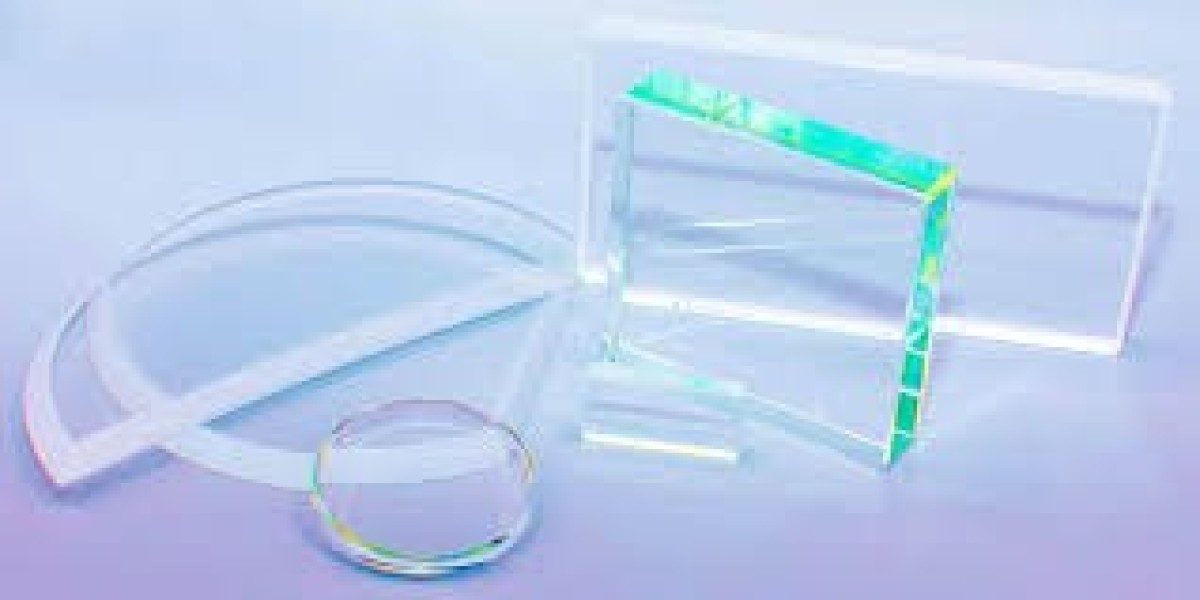In the precision-driven world of optics, the quality of window glass directly affects how light passes through lenses, sensors, and instruments. Whether it’s an imaging device, spectrometer, or AR/VR optical module, clarity and transmission efficiency depend heavily on the glass material used. For industries demanding exact visual results, using window glass with excellent optical properties is not just a choice—it’s a necessity.
In this article, we’ll explore why high-grade window glass is essential in modern optical applications, what types are commonly used, and how coating technologies further enhance its performance.
What Is Window Glass in Optical Applications?
Window glass in optics refers to a flat, transparent plate that allows light to pass while protecting sensitive components like sensors or detectors. It acts as a barrier between the external environment and optical systems without altering the wavelength or direction of light.
In industrial optics, this glass is engineered for precise transmission, minimal reflection, and maximum durability. The material is often made from borosilicate, fused silica, or quartz—each offering different advantages depending on the application.
Why Quality Window Glass Is Critical
Poor-quality window glass can introduce distortion, absorb light, or reflect unwanted wavelengths, leading to inaccurate data or blurred images. In scientific, industrial, or AR/VR optics, this can cause serious performance issues.
High-quality window glass ensures:
Accurate light transmission for clear image capture.
Protection against dust, moisture, and chemical exposure.
Thermal stability, even under extreme temperatures.
Scratch and impact resistance for long operational life.
For instance, in laser systems or sensors, even minor optical impurities can degrade the system’s output. That’s why precision-grade optical windows are manufactured under strict tolerance and coating standards.
Types of Window Glass Used in the Optics Industry
The optics industry uses several types of specialized glass, each serving a unique function:
| Type | Material | Key Features | Applications |
|---|---|---|---|
| Borosilicate Glass | Silica & boron trioxide | High resistance to heat & chemicals | General optics, lab instruments |
| Fused Silica | Ultra-pure silicon dioxide | High UV/IR transmission, low thermal expansion | UV optics, high-temperature devices |
| Quartz Glass | Crystalline silica | Excellent thermal & optical stability | Lasers, spectrometers |
| Sapphire Glass | Crystalline aluminum oxide | Scratch-resistant, durable | Harsh environment optics |
Choosing the right material depends on wavelength range, mechanical strength, and application environment.
Optical Coatings: Enhancing Performance
Raw glass, even if pure, reflects about 4–8% of light at each surface. That’s why optical coatings are applied to reduce reflection and improve transmission.
Common coating types include:
Anti-Reflective (AR) Coating: Minimizes reflection for clearer imaging.
UV/IR Coating: Blocks unwanted ultraviolet or infrared light.
Hydrophobic Coating: Repels water and contaminants.
Hard Coating: Increases scratch resistance.
These coatings enhance the glass’s functionality in devices like microscopes, cameras, and optical modules used in defense, aerospace, and research fields.
Applications of Window Glass in Modern Optics
Window glass is used across various optical systems that require both durability and optical precision. Some major applications include:
AR/VR modules: Ensures visual clarity and prevents image distortion.
Spectroscopy instruments: Maintains wavelength accuracy.
Laser optics: Withstands high-energy beams without damage.
Scientific imaging: Protects sensitive detectors and sensors.
Industrial automation: Provides optical transparency in harsh environments.
In short, window glass is not just a cover — it’s a crucial optical element that defines system performance.
Key Buying Factors for Optical Window Glass
When selecting window glass for optical devices, manufacturers consider:
Refractive index consistency
Transmission wavelength range
Surface flatness and parallelism
Scratch-dig specification (e.g., 40-20 or better)
Coating type and durability
Suppliers specializing in precision optics, such as ARVR Optical, provide custom-engineered glass windows with these parameters optimized for performance and longevity.
Conclusion
The performance of any optical device depends heavily on the quality and precision of its window glass. From laser systems to AR/VR displays, the right choice of glass ensures optical clarity, protection, and long-term stability. Investing in premium glass materials and coatings not only improves performance but also reduces maintenance costs over time.
To meet these industry demands, companies are now adopting custom-engineered window glass solutions tailored for specific light wavelengths, environmental conditions, and mechanical requirements. Choosing reliable manufacturers ensures that every optical system performs at its best.













